Missouri, known as the Show Me State, offers a variety of landscapes and communities, each with its own unique charm and appeal. From bustling urban centers to quaint rural towns, there’s a perfect spot for everyone to call home in this Midwestern state. Whether looking for urban conveniences near St. Louis or Kansas City, the picturesque beauty of the Ozark Mountains, or the laid-back atmosphere of charming small towns, Missouri offers several places that provide a high quality of life. The state is also known for its affordability and low cost of living, family-friendly attractions, and economic opportunities. Taking these factors into consideration, here are the top nine places to live in Missouri in 2024.
Charles
Historic Saint Charles, Missouri.
Situated along the Missouri River northwest of St. Louis is St. Charles, one of the best places to live in Missouri in 2024. Established in 1769, the growing community is home to 71,456 residents. The city is rich in history, serving as the starting point of Lewis and Clark’s Westward Expedition in 1804. St. Charles was also Missouri’s first state capital, now preserved in the town’s historic district on Main Street. The area is characterized by its cobblestone streets, brick buildings, and annual festivals, including the Festival of the Little Hills in August, Oktoberfest in the fall, and Christmas Traditions, which will celebrate its 50th season in 2024. The vibrant community also provides urban amenities, such as pedestrian-friendly streets, local restaurants, and vibrant entertainment, along with outdoor recreation. The riverfront boasts the scenic Katy Trail State Park, a great spot for watching wildlife, bike riding, or strolling along the riverbank.
St. Charles also offers an affordable cost of living, 2.5% lower than the U.S. average. Both the average home price of $286,900 and average rental price of $1,090 per month for a two-bedroom apartment are below the country’s averages. The city is also highly rated for its public and private schools, as well as Lindenwood University. With its blend of annual events, storied history, affordability, and educational opportunities, St. Charles is a top place to live in Missouri.
Chesterfield
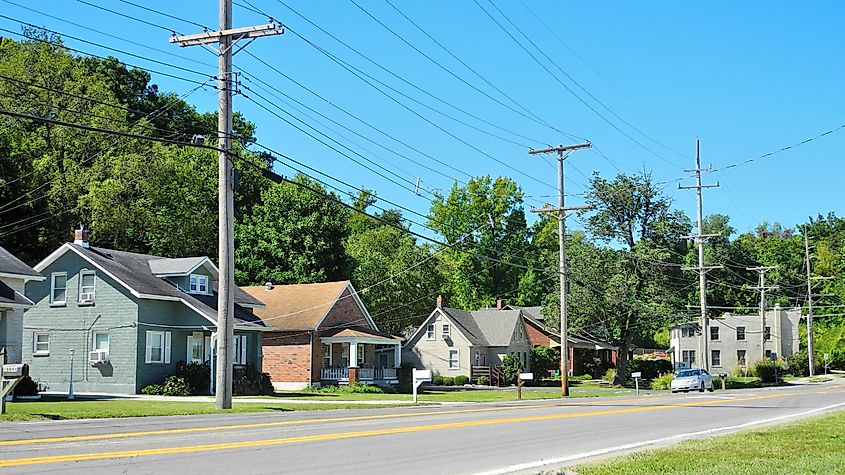 Burkhardt Historic District in Chesterfield, Missouri. Image credit: Mark Ravenscraft via Wikimedia Commons.
Burkhardt Historic District in Chesterfield, Missouri. Image credit: Mark Ravenscraft via Wikimedia Commons.
Chesterfield is a great place to live in Missouri due to its suburban location, top-notch schools, and outdoor recreation. Located along the Missouri River, Chesterfield’s 48,503 residents enjoy the city’s well-maintained parks, green spaces, and outdoor gardens, including the 55-acre Central Park and the Sophia M. Sachs Butterfly House. Chesterfield is also home to one of the best live music venues in the area, The Factory. Additionally, Chesterfield’s convenient location in the greater St. Louis area allows residents easy access to a wide array of cultural attractions and events in the city.
Boasting a thriving economy supported by diverse industries, including healthcare, finance, and technology, Chesterfield’s upscale community offers residents ample job opportunities and economic stability. In Chesterfield, the median income is $124,551 a year, with an average home price of $448,800 and the monthly rental cost of a two-bedroom apartment for $1,280. The area is also renowned for its highly-rated schools, making it a great place for both families and individuals to live in Missouri.
Lee’s Summit
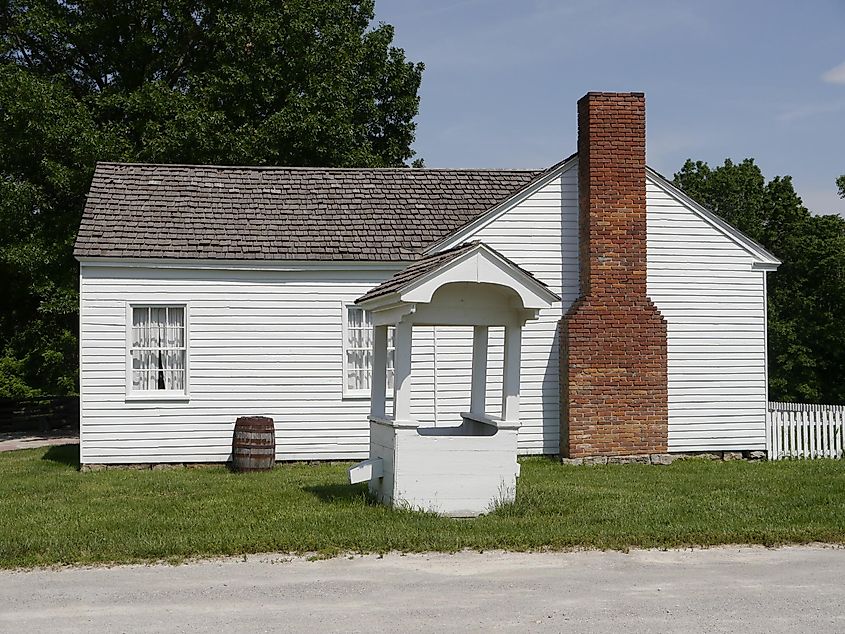 Two-story white house at Missouri Town Living History Museum in Lee’s Summit, Missouri.
Two-story white house at Missouri Town Living History Museum in Lee’s Summit, Missouri.
Located in suburban Kansas City, Lee’s Summit is renowned for its outdoor recreation, cultural attractions, and family-friendly community. The city’s 104,689 residents enjoy a high quality of life, including parks, recreational facilities, shopping centers, restaurants, and cultural events. Residents enjoy the outdoors at Longview Lake and Winterset Park Nature Area, and can learn more about the area’s history at Lee’s Summit History Museum. Since the town is situated just southeast of Kansas City, residents have convenient access to the metropolitan area’s employment opportunities, entertainment options, and cultural amenities, all while maintaining its serene suburban atmosphere.
Lee’s Summit is also renowned for its top-rated schools that are consistently recognized for their excellence in state and national assessments, making Lee’s Summit a great place for families with school-aged children. The median home price in Lee’s Summit is $356,900, while the average monthly rent for a two-bedroom apartment is $1,150. With its enticing blend of exceptional schools, quality of life, access to urban amenities, and outdoor recreation, Lee’s Summit is a highly desirable locale for individuals and families alike.
Springfield
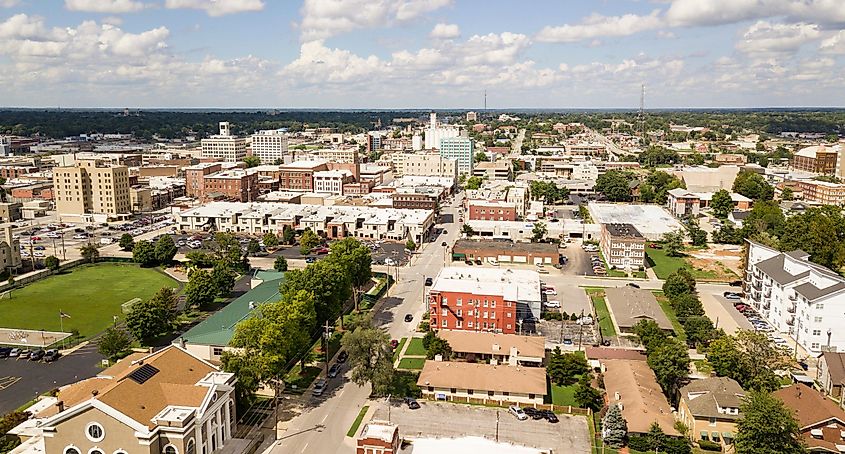 Aerial view of Springfield, Missouri.
Aerial view of Springfield, Missouri.
Springfield is an excellent place to reside in Missouri due to its affordability, high quality of life, and central location in the heart of the Ozarks. The cost of living in Springfield is 16.1% lower than the U.S. average, with a typical home cost of $217,200 and a two-bedroom rental for $890 a month. The city provides its 171,691 residents with a wide array of amenities and attractions to enjoy, such as the Springfield Art Museum, Missouri Sports Hall of Fame, and the Dickerson Park Zoo. The city boasts a strong sense of community and numerous family-friendly activities, such as the Rock’ N Ribs BBQ Festival in April, the Birthplace of Route 66 Festival & Car Show in August, and Winterfest in December.
Springfield’s proximity to the beautiful Ozark Mountains offers endless opportunities for outdoor recreation. In town, residents enjoy fishing and boating at Lake Springfield Park, as well as hiking and bicycling on 70 miles of multi-use trails along the Ozarks Greenways Trail Network. Additionally, Springfield is home to well-known educational institutions, such as Missouri State University. Springfield’s blend of affordability, cultural vibrancy, outdoor recreation, and educational opportunities make it a highly desirable place to live.
O’Fallon
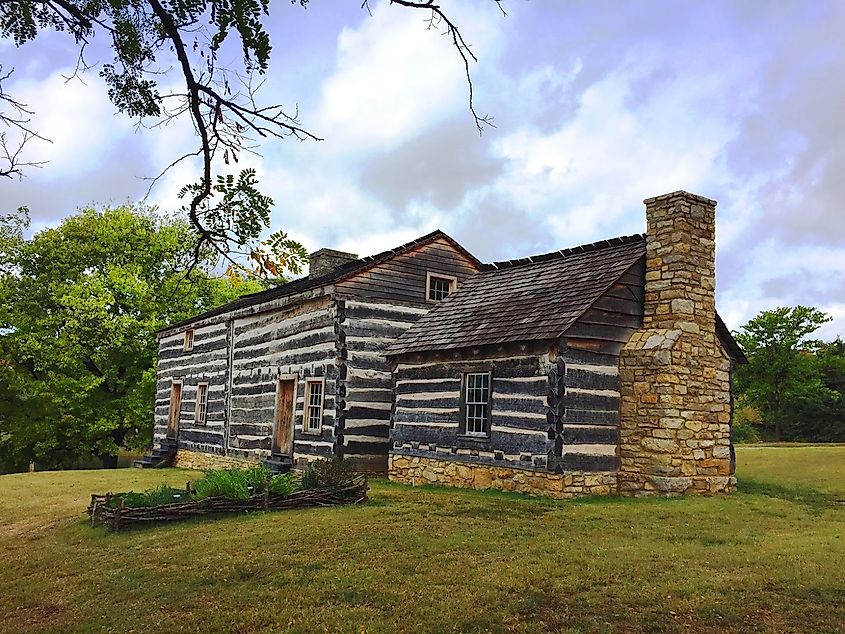 Fort Zumwalt Park in O’Fallon, Missouri. Image credit: Classiv via Wikimedia Commons.
Fort Zumwalt Park in O’Fallon, Missouri. Image credit: Classiv via Wikimedia Commons.
O’Fallon is renowned for its strong sense of community, welcoming atmosphere, and excellent schools. One of the best cities to live in Missouri in 2024, O’Fallon boasts low crime rates, well-maintained neighborhoods, and an extensive park system. For the city’s 93,531 residents, O’Fallon provides ample outdoor recreational spaces and activities for all ages to enjoy. The city’s scenic Fort Zumwalt Park is a local favorite, with its rebuilt War of 1812 fort site overlooking Lake Whetsel. The park is also home to the city’s annual Celebration of Lights in December, while more annual festivals and performances occur at O’Day Park.
O’Fallon is also centrally located near major highways, making it a convenient location in the metro St. Louis area. In O’Fallon, the median home price is $326,900, while the average monthly rent for a two-bedroom apartment is $1,135. Supported by a diverse economy encompassing industries such as healthcare, manufacturing, and retail, O’Fallon provides residents economic stability with an unemployment rate of 2.2%, well below the national average. The city’s combination of strong community ties, family-friendly environment, recreational amenities, and economic prosperity makes O’Fallon a great place to call home.
Kirkwood
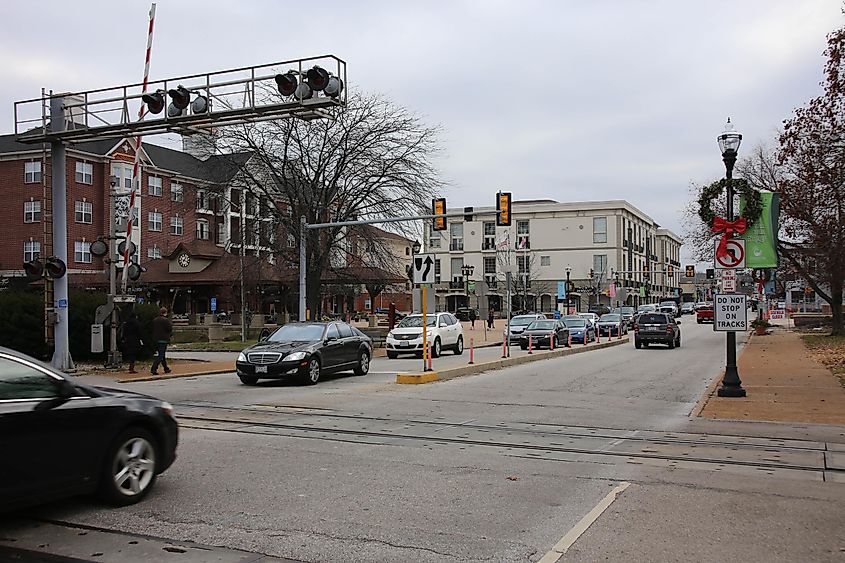 Downtown Kirkwood, Missouri. Image credit: Paul Sableman via Wikimedia Commons.
Downtown Kirkwood, Missouri. Image credit: Paul Sableman via Wikimedia Commons.
Kirkwood, a suburb southwest of St. Louis, is a highly desirable place to live in Missouri. The city is centrally located, offers safe neighborhoods, and boasts highly-rated schools. Kirkwood also features many family-friendly activities, such as the Magic House and St. Louis Children’s Museum. Kirkwood also provides a high quality of life to its 29,075 residents, along with its charming downtown area, historic homes, and tree-lined streets. Locals actively participate in the city’s events, festivals, and community initiatives, such as the Route 66 Cars and Guitars Festival in June and the Greentree Festival at Kirkwood Park in September. The city boasts a dozen parks, the Meramec River Greenway Walking Trail, and Grant’s Trail.
The city is also located near St. Louis along major highways, and also has a train station. Residents in Kirkwood enjoy a median income of $98,637, along with a median home price of $369,700 and a monthly rent price of $1,240 for a two-bedroom apartment. Kirkwood’s blend of small-town charm, outdoor recreation, excellent schools, and convenient location make it a desirable place to live for many individuals and families.
Columbia
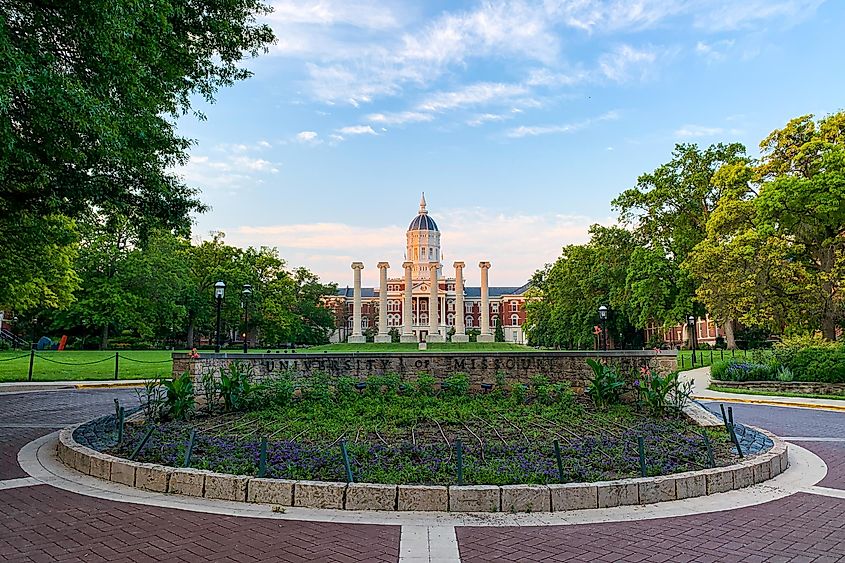 The University of Missouri campus in Columbia, Missouri.
The University of Missouri campus in Columbia, Missouri.
Known for its friendliness and affordability, Columbia is one of the best places to live in Missouri. Located centrally in the state between Kansas City and St. Louis, Columbia offers a welcoming atmosphere and a diverse range of cultural and recreational opportunities. The 130,565 residents enjoy hiking on the extensive trails, swimming at the aquatic center, and being outdoors at the city’s many parks. Stephens Lake Park and Finger Lakes State Park are both great options for fishing, boating, and swimming.
Renowned for its lively downtown area, bustling with local shops, restaurants, and entertainment venues, Columbia fosters a dynamic and engaging urban experience. The city’s educational institutions, including the University of Missouri, provide residents with access to top-tier educational and research opportunities. With a median home price of $269,200 and an average monthly rent price of $970 for a two-bedroom apartment, Columbia is an affordable place to live. With its natural beauty, education opportunities, and central location, Columbia is a great place to live in the heart of Missouri.
Clayton
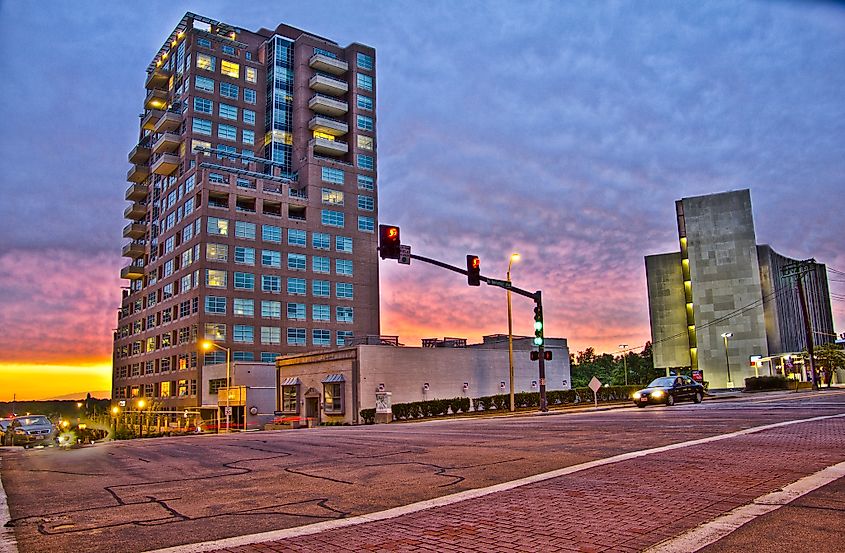 Downtown Clayton at sunset in Saint Louis, Missouri. Image credit: Morgan Burke via Flickr.com
Downtown Clayton at sunset in Saint Louis, Missouri. Image credit: Morgan Burke via Flickr.com
Bordering Forest Park in St. Louis, Clayton is one of the best places to live for those seeking an affluent area in Missouri in an urban location. The median income in Clayton is $117,593, along with a median home price of $698,800 and an average monthly two-bedroom rental costing $1,350. The city offers its 16,804 residents a high quality of life, a thriving economy, and access to top-notch amenities and services. Downtown Clayton is bustling with upscale shops, renowned restaurants, and cultural attractions, including the annual St. Louis Art Fair in the fall. The city also boasts several parks and trails, including the renowned Shaw Park and the Centennial Greenway.
Clayton is also renowned for its top-rated schools, safe neighborhoods, and strategic location in the metro St. Louise area near major roads and the Metro, the region’s public transit system. Residents have convenient access to a wide range of transportation options, employment opportunities, and healthcare facilities. With its blend of upscale living, cultural richness, and economic prosperity, Clayton is the perfect Missouri city for individuals and families seeking a sophisticated and fulfilling lifestyle.
Blue Springs
 The northern shore of Lake Jacomo in Blue Springs, Missouri. Image credit: Vincent Parsons via Flickr.com
The northern shore of Lake Jacomo in Blue Springs, Missouri. Image credit: Vincent Parsons via Flickr.com
Situated just east of Kansas City, Blue Springs is a friendly community that prides itself on being a neighborly community. Blue Springs is one of the best places to live in Missouri for its friendly atmosphere, city’s parks, affordability, and central location. With excellent schools and safe neighborhoods, Blue Springs is particularly appealing to families looking for a nurturing environment to raise children. The city’s parks and recreational facilities provide ample opportunities for outdoor activities for its 59,634 residents. Blue Springs also boasts several lakes, parks, trails, and will be home to the Blue Surf Bay Waterpark in the spring of 2024.
The city is an affordable community with a median home price of $269,300 and an average monthly rent cost for a two-bedroom unit of $1,180. Additionally, the city’s convenient location just east of Kansas City provides residents easy access to employment opportunities, cultural attractions, and entertainment options while still enjoying the tranquility of suburban living. With its blend of community spirit, family-friendly environment, outdoor recreational amenities, and proximity to urban conveniences, Blue Springs is a highly desirable destination for individuals and families alike.
Living in the Heart of Missouri
The towns and cities in the Show Me State are the top places to live in Missouri. With its diverse regions and communities, Missouri offers an abundance of opportunities for residents to thrive. From the vibrant energy of its cities to the tranquility of its countryside and the charm of the state’s small towns, Missouri offers the perfect place for anyone to live. With a reputation for affordability, family-friendly attractions, and economic stability, Missouri offers opportunity and high-quality living. Whether an individual is looking for a vibrant place to live or a family seeking exceptional schools, Missouri invites all to experience life in the Midwest.







